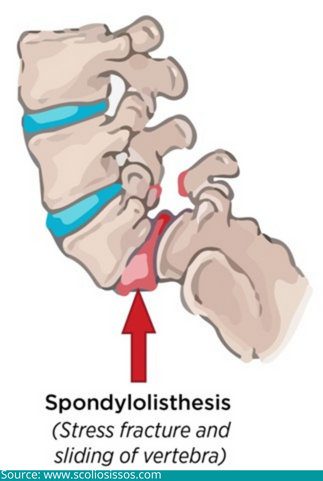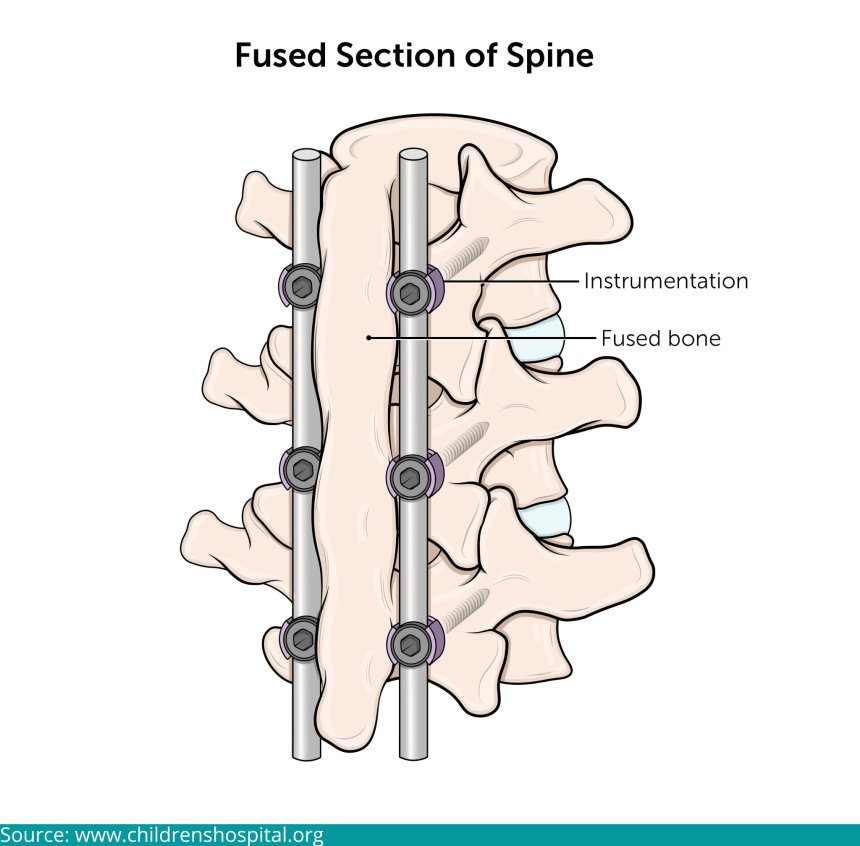A spinal fusion is a type of surgery that is performed to correct problems with the bones and tissues of the spine. The surgery involves fusing 2 or more vertebrae into a single unit.
Once bonded, they are unable to move as they once did. The intention is to stop back pain by halting motion between the 2 bones. Doing this prevents potentially uncomfortable muscle, ligament, and nerve stretching in the area.
Do you suffer from chronic back pain? You may want to consider spinal fusion surgery. Please visit Dr. Gurneet Singh Sawhney, an acclaimed neurosurgeon in Mumbai, for an effective treatment.
What are the conditions requiring a spinal fusion?

A spinal fusion aims to reduce pain and improve spine function. It is typically used to treat degenerative conditions such as:
- Spondylolisthesis – A vertebra that has shifted from its place onto the vertebra under it
- Scoliosis – The sideways curving of the spine
- Kyphosis – Hunchback or abnormally forward curved spine
- Spine fractures – Cracks in the bones of the spine
- Tumors – Uncontrolled and abnormal growth of cells
- Degenerative disk disease – When space between the disks becomes narrow
If you or a loved one ails from any of the conditions mentioned above or has severe back pain that does not go away, please get in touch with Dr. Gurneet Singh Sawhney.
He is often regarded as the best neurosurgeon in Mumbai. He won the “The Most Preferred Top Neurosurgeon in Mumbai” in 2021 at ‘Golden Aim Awards’ conducted by Dynergic Business Solution.
How Is the Surgery Performed?

Spinal fusion surgery is a major procedure that is typically performed under general anesthesia. The goal of this procedure is to stop the motion at the damaged vertebral segment by fusing the vertebrae together.
Dr. Gurneet Singh Sawhney, frequently called the best spine surgeon in Mumbai, adds that a bone graft or bone substitute is used to help promote the growth of new bone tissue. The graft may be taken from your hip (autograft) or a donor (allograft).
The surgery usually takes about 3-4 hours to complete. The surgeon approaches the spine from the front (anterior), side (lateral), or back (posterior). Anterior approaches are most common.
- Anterior lumbar interbody fusion (ALIF) – It is a type of spinal fusion surgery used to treat lower back pain. A small incision is made in the abdomen, and the surgeon moves the intestines out of the way to access the spine.
- Lateral lumbar interbody fusion (LLIF) – Lateral approaches are made through an incision in the side of the patient. This approach may be used when the surgeon is treating more than 1 level of the spine.
- Posterior Lumbar Interbody Fusion (PLIF) – Posterior approaches are made through an incision in the back. This approach is used when the surgeon is treating only 1 level of the spine.
After the incision is made, the surgeon removes the damaged disc. The bone graft is placed in the space created by the removal of the disc. Cages may be used to hold the graft in place and provide support for the disc space. Metal screws and rods may be used to hold the vertebrae in place.
After the graft is in place, the surgeon closes the incision. A dressing or splint will be applied to the incision. A drain may be placed under the skin to remove any excess fluid.
What is the recovery process post-surgery?
After the surgery, you will be taken to the recovery room, and closely monitored by our health professionals. You will likely need to stay in the hospital for 3-5 days post-surgery.
You may experience pain, but you will be given pain medication to help keep you comfortable. You may be given a neck collar or brace to wear. During this time, you will be encouraged to walk around and move as much as possible to help prevent the formation of blood clots.
You will be given instructions on how to care for yourself at home. These instructions will include information on wound care, activity restrictions, and follow-up appointments. You will be discharged home when the surgeon feels it is safe for you to leave.
Once you are discharged from the hospital, you will need to take it easy for 4-6 weeks as you recover.
After 6 weeks, you will likely be able to return to your normal activities. However, it may take up to a year for you to fully recover from the surgery.
Are there any risks involved?
As with any surgery, there are some risks associated with spinal fusion surgery, including:
- Risks from anesthesia
- Infection
- Blood clots
- Bleeding
- Pain
- Problems with the rods and screws
However, these risks are typically low, and the surgery is generally considered to be safe.
If you are considering spinal fusion surgery, be sure to discuss the risks and benefits with your doctor. You should also ensure that you are healthy enough for the surgery and have realistic expectations for the results.
Dr. Gurneet Singh Sawhney, a highly-skilled neurosurgeon in India, stresses the importance of adhering to the after-care guidelines, taking your prescribed medications, and avoiding strenuous activity.
Conclusion

Living with a condition that causes constant back pain and affects your spinal health can be very challenging and affect your daily activities significantly. It can not only hamper the quality of your life but also make you feel alienated from the rest of your family and society in general.
Do not let your spinal health bring you down. The more you delay seeking medical intervention, the more damage you will be causing to your spine. So please contact us and schedule an appointment with the top-notch neurosurgeon Dr. Gurneet Singh Sawhney. With over 17 years of expertise in providing safe, reliable, and effective treatments to his patients, he is frequently known as the best spine doctor in Mumbai.

